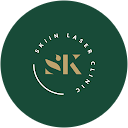
In the rapidly evolving landscape of modern medicine, technological innovations continually redefine the boundaries of what is achievable in patient care. Among these advancements, medical lasers stand out as transformative tools that have revolutionised various aspects of healthcare. From precision surgical interventions to cutting-edge dermatological procedures, the versatile applications of medical lasers have become essential to the practice of medicine.
This article explores the fundamental principles of medical lasers, explaining their diverse functionalities across multiple medical disciplines. As we delve into the world of laser technology, we will understand the mechanisms that make lasers indispensable in surgeries, therapies, dermatology, and beyond, ultimately shaping a new era in healthcare.
Understanding Medical Lasers
Lasers (short for Light Amplification by Stimulated Emission of Radiation) are devices that produce coherent and focused beams of light through the process of emission. Medical lasers emit light with specific wavelengths, characterised by high intensity, monochromaticity, coherence, and collimation. This means that laser light is of a single colour or wavelength and that laser beams have a consistent phase relationship and remain parallel over long distances. This results in a highly focused output and precise targeting.
The fundamental principles of laser technology involve stimulated emission, a process where photons stimulate the emission of identical photons, leading to the amplification of light. By applying external energy, such as electricity, to the gain medium, atoms or molecules in the gain medium are excited, causing them to move to higher energy levels. The elevated particles must outnumber those in the ground state for population inversion to occur which in return is essential for the amplification of light in lasers.
The gain medium is a crucial component of laser systems as it is the material within the laser where stimulated emission takes place to generate laser light. Different types of lasers use different gain media, which can include gases (e.g., in gas lasers), crystals (e.g., in solid-state lasers), semiconductors (e.g., in diode lasers) or optical fibres (e.g., in fibre lasers). The gain medium amplifies the light through this process, creating a pool of photons with consistent properties.
The optical resonator consists of mirrors positioned at the ends of the gain medium and is an optical cavity that enhances light amplification. The resonator reflects the emitted photons back and forth, allowing for further stimulated emission and amplification.
Applications of Medical Lasers
Surgical Applications
Laser surgery, also known as laser ablation or laser excision, represents a revolutionary approach to medical procedures. Surgical applications primarily involve the use of lasers for precise cutting, ablation, or coagulation of tissues during surgical procedures. The precision of laser technology allows for controlled tissue removal or alteration with minimal damage and bleeding to surrounding structures.
CO2 lasers, erbium lasers, and diode lasers are commonly used in surgical applications based on their ability to cut or coagulate tissues.
Common Procedures:
- Eye Surgeries (e.g., LASIK): In eye surgeries, such as LASIK (laser-assisted in-situ keratomileusis), lasers reshape the cornea to correct refractive errors, providing patients with a quick recovery and reduced reliance on corrective lenses.
- Cosmetic Procedures: Laser surgery applications also include various cosmetic procedures including skin rejuvenation, vascular treatments, and fractional laser therapy. The primary focus lies on precise cutting, ablation, or coagulation of tissues during surgical procedures.
- Tumour Removal: Laser Surgery is also essential in tumour removal, especially in areas where traditional surgical methods might be challenging or certain skin cancers.
- Dental Procedures: In dentistry, lasers are employed for cavity preparation, gum reshaping, and other procedures offering advantages like reduced need for anaesthesia and faster recovery.
Dermatological Applications
Dermatological applications of medical lasers have significantly advanced cosmetic and therapeutic procedures, offering precise and effective solutions for various skin conditions. Due to lasers being able to target specific chromophores in the skin, laser technology in dermatology offers versatility and allows for tailored treatments with minimal damage to the surrounding tissue.
As there is a wide range of dermatological applications, many different lasers can be utilised depending on the procedure. Q-switched lasers are an ideal fit for pigmented lesion removal or tattoo removal as they emit short pulses of high-energy light, effectively breaking down pigments. Whereas diode lasers are often preferred for laser hair removal due to their efficacy in targeting melanin in hair follicles. Pulsed dye lasers are commonly used for vascular lesion treatments due to their ability to target blood vessels without damaging surrounding tissues.
Common Procedures:
- Laser Skin Resurfacing
- Pigmented Lesion Removal
- Vascular Lesion Treatment
- Laser Hair Removal
- Acne Treatment
- Fractional Laser Therapy
- Tattoo Removal
Therapeutic Applications
Medical lasers can also be used for either pain management or photodynamic therapy (PDT). Laser therapy for pain management involves low-level laser therapy that stimulates cellular activity, promoting healing and reducing pain. Conditions such as musculoskeletal pain, inflammation, and certain chronic conditions can be treated.
Photodynamic therapy involves photosensitising agents and laser light to destroy abnormal cells or microbes. This way certain types of cancer, skin conditions, and infections can be treated.
Advantages of Medical Lasers
1. Precision
Laser technology enables highly precise and controlled tissue interactions, allowing for accurate targeting during surgical and dermatological procedures. Surgeons and dermatologists can achieve targeted outcomes while minimising damage to surrounding healthy tissues.
2. Minimised Bleeding
Lasers can coagulate blood vessels during surgical procedures, reducing bleeding compared to traditional methods. This advantage contributes to clearer visibility for surgeons and quicker recovery times for patients.
3. Reduced Scarring
Laser precision minimises tissue damage, leading to reduced scarring after procedures. This leads to patients often experiencing improved cosmetic outcomes with less noticeable scars.
4. Versatility
As mentioned above, medical lasers find applications across a broad spectrum of medical disciplines. The adaptability of laser technology makes it a versatile tool for addressing diverse medical conditions and treatment modalities.
5. Minimally Invasive Procedures
With lasers, minimally invasive or noninvasive procedures can be performed, reducing the need for extensive incisions. Patients benefit from shorter recovery times, less postoperative pain, and decreased risk of complications.
6. Customisation of Treatment
Different types of lasers and wavelengths can be selected based on the specific characteristics of tissues or conditions being treated. Tailoring laser treatments allows professionals to address a wide range of medical issues with precision and effectiveness.
7. Reduced Risk of Infection
Lasers can sterilise and decontaminate tissues during surgery, reducing the risk of postoperative infections. This advantage is particularly critical in surgeries where maintaining a sterile environment is essential.
8. Faster Recovery Times
Due to the laser’s minimally invasive and precise nature, patients benefit from quicker recovery times. This includes shorter hospital stays and a faster return to normal activities compared to traditional surgical methods.
Conclusion
Medical lasers have emerged as a sign of innovation and versatility, leading to improved patient outcomes. From surgical suites to dermatological clinics, the applications of medical lasers, have transformed the way healthcare professionals approach diagnosis, treatment, and aesthetic enhancement. The advantages of medical lasers, rooted in their ability to offer unparalleled precision and versatility, have redefined standards across various medical disciplines. The minimally invasive nature of laser procedures, coupled with reduced bleeding and scarring, has paved the way for quicker recovery times and enhanced patient comfort. As technology continues to advance, so too will the applications of medical lasers, promising even greater precision, efficacy, and possibilities in the realm of healthcare.












